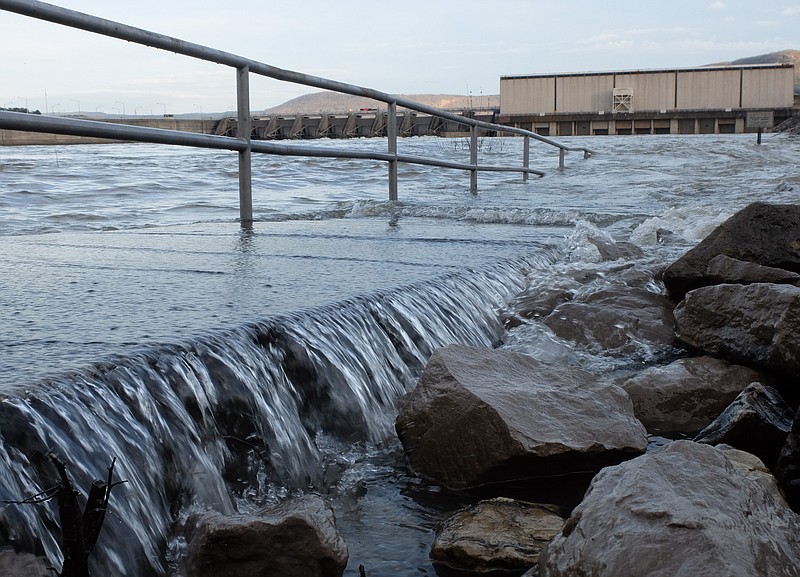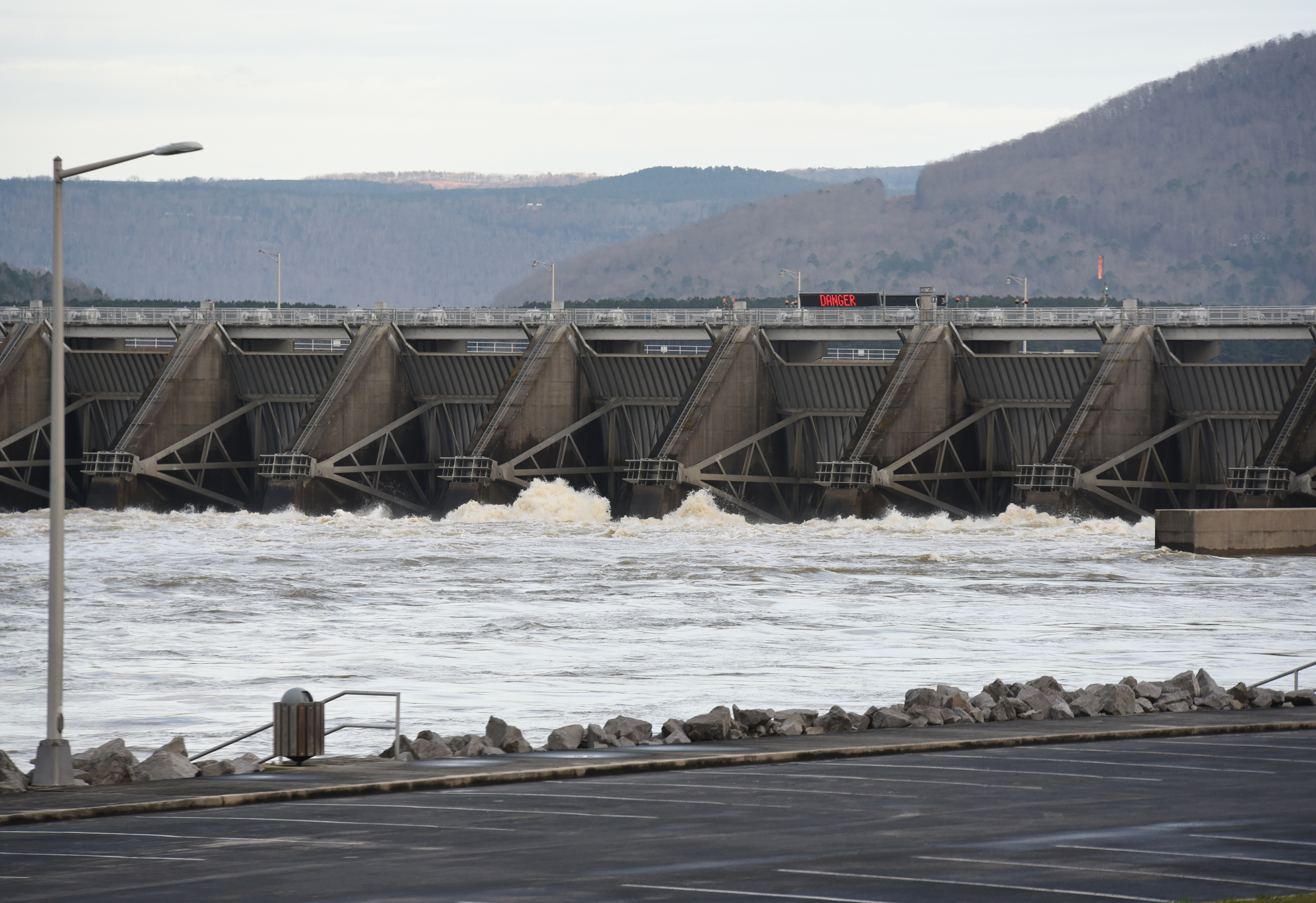Record December rains have moved out of the area, but managing the waters they left behind is getting dicier for a group of federal agencies.
The Tennessee Valley Authority, which has been spilling as much water as it can this month to avoid flooding upstream, now has to worry about downstream. Water is rising fast on the Ohio River, and, on the mighty Mississippi, flooding is anticipated to near the catastrophic levels seen in 1993.
With a flood warning in effect for Memphis this weekend, the U.S. Army Corps of Engineers - which manages locks and dams on the Cumberland, Ohio and Mississippi rivers - and TVA coordinated how to best deal with the flow on the multitude of rivers.
Instead of opening up dams' spillways, they now are holding back water in Tennessee and Kentucky to help.
"It's kind of a joint effort," Mark Rankin, a spokesman for the Nashville district of the Corps of Engineers, said of the collaboration. "We're all talking, and when the folks on the Mississippi River need help, it's a big effort. They have phone conversations, conference calls and talk about it and say, 'Hold some water back so it doesn't hurt us on this half.'"
"We're in close coordination [with other agencies] and always manage the river to ensure the safety of the population centers," TVA spokesman Scott Fieldler said.
A lot depends on the decisions they make.
The Mississippi River flood of 1993 was among the most costly and devastating ever to occur in the United States, with $15 billion in damage reported. That's almost $25 billion in today's dollars. In some categories, the 1993 flood even surpassed the renowned 1927 flood, at the time the largest flood ever recorded on the Mississippi.
It's not just the Corps and TVA in on the conversation. Other agencies, such as the National Weather Service and the U.S. Geological Survey, also are involved in decisions on how flooding risks will be managed through the dams, lakes and reservoirs that dot the network of rivers in the Southeast.
Heavy rainfall and high waters in Southeast Tennessee and North Georgia around Christmas caused problems, with portions of area roads washing out and at least two area deaths attributed to the conditions. However, large-scale flooding in Chattanooga was avoided, and TVA said it averted potentially $130 million in flood damage to the city.
Before the call to close the spillways, the TVA-operated Chickamauga Dam was spilling 900,000 gallons of water per second on Thursday, with dams lying farther west on the Tennessee River spilling more than a million gallons per second. The Tennessee River flows southwest from the Knoxville area into Chattanooga, down into Alabama and then up into Kentucky.
Once the water reaches Lake Barkley and Kentucky Lake in western Kentucky, however, it is being held there so it doesn't meet with the already-high waters in the Ohio River and the Mississippi River.
The St. Louis area on the Mississippi River already is experiencing flooding, and high water has caused at least 28 deaths in Missouri, Illinois, Arkansas and eastern Oklahoma since last weekend, according to emergency officials.
The 10.41 inches of rain in Chattanooga in December was more than double the December average of 4.75 inches and the most the city has received in any December since 1990, according to Andrew Moulten of the National Weather Service's Morristown office.
It was the sixth-wettest December for the city since the National Weather Service began keeping track in the late 19th century.
Not only does TVA have to work arm-in-arm with other agencies, it also tweaks its reservoir management practices in response to some events. That happened after record flooding May 2003 in East Tennessee.
Several days of continuous, heavy rain in early May of that year created rising waters that converged on Chattanooga.
According to the National Weather Service's Morristown office, resulting flooding caused the evacuation of hundreds of people and damage to public and private property estimated near $20 million in Hamilton County alone. Significant damage with numerous rescues and evacuations occurred in many of the counties across southeast Tennessee and central east Tennessee.
In response to the flooding, TVA changed when it raises and lowers water levels, substantially extending the winter low-water period
TVA doesn't rely just on the National Weather Service. It has its own weather division that keeps an around-the-clock eye on potentially threatening conditions.
"Mother Nature is always the wild card," Fieldler said.
Contact staff writer David Cobb at dcobb@timesfreepress.com or 423-757-6249.

